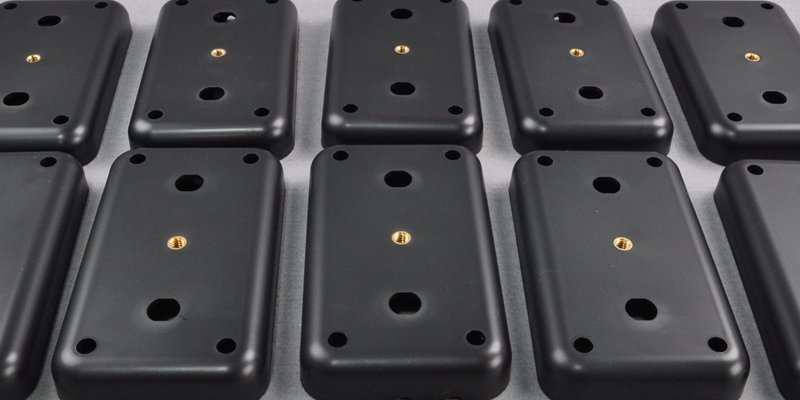
Modern manufacturers create various products by fusing plastic with metal or other compatible components. The insert molding process is a popular plastic injection molding technology that allows manufacturers to combine engineering plastics with inserts (made from another material) to produce products with wear resistance, light weight, and improved tensile strength.
To obtain a better result, it is advisable to understand everything about the insertion mold process. This article explains the definition of the insert mold process, as well as its advantages and limitations. You will also learn more about typical insert molding applications and receive helpful tips for injection molding with practical inserts.
What is insert molding?
Insert molding is a plastic injection molding technique in which inserts, particularly metallic inserts, are installed or incorporated into an injection molded part. With this technology, the wafer is placed into the mold cavity before molten plastic is poured around the wafer under high pressure. This causes the insert to become a solidified plastic piece when it cools.
Metal insert molding allows the production of strong, durable and lightweight plastic products with metal components. Therefore, due to its high compatibility and effectiveness, it is a widely used method applicable in various industries.

Common Insert Mold Materials
Injection molding is a versatile process compatible with a variety of materials as it is ideal for fusing two different components into an outer or top layer of the product using the inlay process. Thermoplastic and thermosetting materials are mainly used in injection molding because of their strength, robustness or good current flow.
- Thermoplastics: Polypropylene (PP), Nylon (Polyamide/PA), Polycarbonate (PC), ABS, Polyethylene (PE) and Acetal;
- Thermosets: polyester, epoxy, melamine-formaldehyde and urea-formaldehyde resins;
- Elastomers: polyurethane, natural rubber.
Steps for the plastic insert molding process
The insert molding process is similar to traditional injection molding in that it involves melting and injecting molten plastic into a mold. However, in the plastic insert molding process, the inserts are loaded into the mold as the molten plastic flows into the mold cavity. Here is a step-by-step guide to the plastic insert molding process.
1. Load the selected inserts into the mold
It would be helpful if you considered the placement of inserts in the molds when designing the molds for the process. This ensures that the insert maintains its orientation and position throughout the molding process. There are two ways to load inserts into the mold: “automatic loading” and “manual loading”.
Two methods for loading inserts into the mold
Automatic loading is more accurate, consistent and efficient. Robots or automated mechanisms that can withstand high temperatures are used to load the inserts into the mold. Manufacturers therefore often benefit from faster delivery times because computer-controlled machines are fast and can form more parts per hour.
On the other hand, manual loading/hand loading is ideal for low-volume injection molding because it involves manually loading the loading components into the mold. Furthermore, this process is more common than the automated process because the operator is always present to carefully inspect, package, and assemble the injection molding components, resulting in lower additional costs. However, the manual insertion technique may lack high precision and repeatability.
2. Inject the melted plastic into the mold
You need to use an injection unit to put the molten material into the mold under high pressure. The applied pressure forces the molten plastic to fill the mold evenly. In this way, air is expelled through the ventilation holes present in the mold, ensuring that the plastic is firm and completely adhered to the inserts.
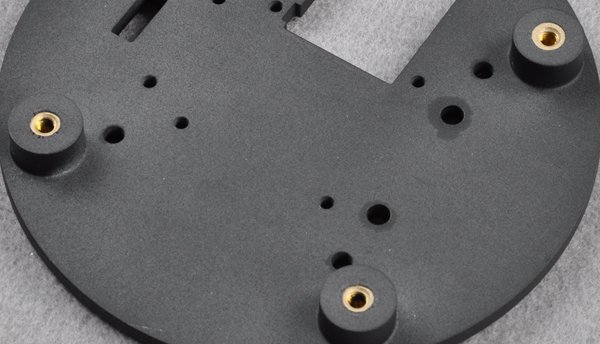
3. Open the mold and eject the mold after cooling
Although the melted plastic fills the mold evenly, it would be better to maintain a certain temperature to ensure uniform solidification. You must maintain a holding pressure to mitigate possible shrinkage effects while also preventing backflow into the cylinder. However, the mold opens when cooled and allows the insert molding to be removed.
4. Separate the molding from the sprues
Frames are often attached to the sprues used in their manufacture. These sprues are like structures or frames that guarantee the manufacture of all molding components. You must remove the sprue frame to use it. However, be more careful when separating the sprues to avoid damaging or degrading the molding.

5. Post-molding processes
Plastic molds often require certain post-processing operations after molding before they are ready for market. Common post-processing operations frequently used when inserting molded components include:
- Deburring : Deburring tools are used to remove excess material that affects the physical properties of the molded part.
- Heat treatment : Heat treatment can effectively eliminate internal stresses that can affect the quality of the molded part. The molded part is typically exposed to a temperature 10-20°C below the forming temperature or above the operating temperature.
- Humidity control : In this treatment, molded parts are immersed in water at 80-100 °C. This isolates the molded parts from air, increases moisture absorption, stabilizes size and prevents oxidation.
Design Considerations for Insert Injection Molding
Although insert molding seems simple, the process can be complicated. Here are some useful design considerations for practical insert molding.
Check costs/budget
For cost-sensitive parts, the cost of injection molding is an important consideration. Here the costs include the costs of purchasing inserts and hiring an operator. Increasing the unit price by adding an insert is another cost factor to consider.
Identify the characteristics of the selected tablet
You must understand the characteristics of the inserts selected for the intended application. Extreme temperatures and pressures occur during the insert molding process. Therefore, the chosen insert must be able to withstand these extreme conditions during the procedure. Therefore, it is necessary to study the insert material, its dimensions and surface finish to determine the ideal molding method.

Insert position
The position of the insert is another important factor, as it determines the forces that act on it over time. Likewise, when deciding on the ideal location, it would be helpful to consider the intended use of the insert and the amount of plastic needed to hold it in place.
Most importantly, make sure the insert remains in place throughout the entire process, as changes in position can affect the molding process and render the part unusable.
Narrow space between metal inserts
It is advisable to maintain a narrow space between metal part inserts when designing injection molding. This ensures that the inserts are covered by the liquid plastic injected into the mold, allowing for a strong bond between the metal inserts and the plastic material. This prevents cavities and improves the structural integrity of the insert molding.
Choose the right material
When it comes to injection molding of inserts, choosing a suitable plastic and insert material is crucial. Choose strong, durable materials that adhere perfectly to each other to prevent the plastics around the inserts from cracking.
Typical examples of these plastic injection molding materials include nylon, ABS, polycarbonate and polyethylene. Brass and steel, on the other hand, are typical materials used.
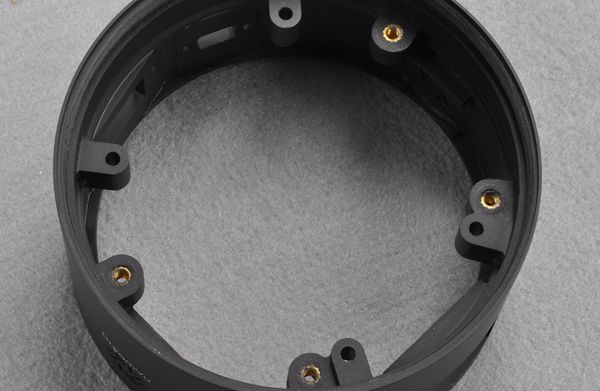
Use the correct form
Choosing the appropriate mold for the insert molding process is another crucial factor. It not only shapes the molten plastic, but also holds the insert in place during the process. Therefore, use a well-designed mold that allows for an even flow of molten plastic and ensures that the insert remains in place throughout the molding process.
However, use a mold with rounded corners to ensure free flow of molten plastic and avoid stress on the mold walls often caused by sharp corners.
Advantages and Disadvantages of Injection Molding Inserts
Thanks to its numerous advantages, the insertion mold can be used in a variety of ways. Here are some of the expected benefits of injection molding inserts:
- Insert injection molding minimizes assembly and labor costs because no post-mold assembly is required.
- These injection molding inserts reduce the size and weight of molded products.
- Inset molding offers greater design flexibility and allows product designers to express their creativity as much as possible.
- Metal inserts strengthen the mechanical properties of injection molded parts.
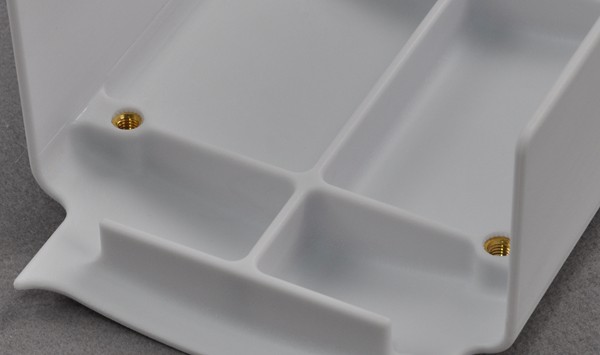
Although injection molding inserts offer many advantages, here are some of their disadvantages:
- Designing a mold with inserts for injection molding is more expensive and complex.
- The material of injection molded inserts may not be compatible with the molding process due to different rates of thermal expansion of the inserts and surrounding materials.
- Due to inaccurate positioning of the injection molding insert during the molding process, defects may occur in molded parts and components.
- Using inserts increases cycle time because the inserts must be precisely positioned in the mold before the process.
Insert Frame Applications
Insert moldings are used in many different industries. Industries where insert moldings are commonly used include:
Auto Industry
Manufacturers in the automotive industry produce insert molded parts as an alternative to metal parts. These plastic insert frames are more durable and lighter. Threaded fasteners, gears, and electrical sensors are common insert molds used in the automotive industry.
Consumer electronics
Manufacturers in the consumer electronics industry often use insert frames to eliminate the need for fasteners and soldering during manufacturing. Typical examples of insert molded parts in this industry include digital control panels, buttons for household appliances, assemblies, and rubber-coated electrical cables.
Medical equipment
The healthcare industry benefits significantly from the insert mold process because plastic components are easier to sterilize. Healthcare product manufacturers use the insert molding process to produce various medical devices, including dental instruments, tubes, medical device components, prosthetics, medical casings, medical buttons, and surgical instruments.
Comparison Between Insert Molding and Overmolding
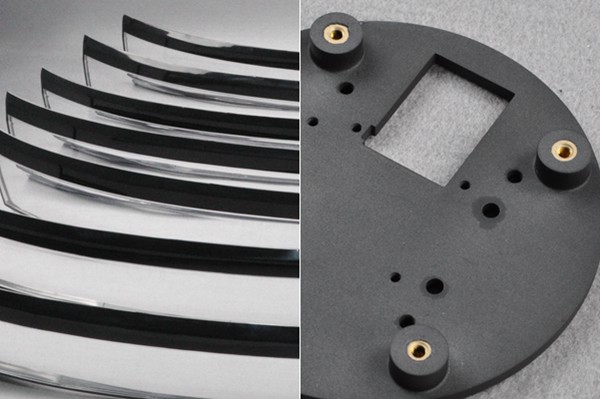
Insert molding and overmolding are different injection molding processes that are often used to produce molded parts with similar structure. Despite the similarities, both techniques differ in the steps required to achieve the desired result.
Insert molding is a unique technique that involves molding plastic material around a prefabricated insert in a mold. The plastic material adheres tightly to the insert and forms a single piece. Insert molding is a single injection molding process that is very fast and uses less material.
Overmolding, on the other hand, is a two-component injection molding technique in which a rubber-like plastic is poured over another plastic. Overmolding is a two-part injection molding technique that is more expensive than insert molding because more material is used.
Additionally, manufacturers use the insert injection molding process to produce molded parts with greater strength and structural integrity. Overmolding, on the other hand, makes the product more comfortable, more aesthetically pleasing, and provides protective layers.
Get insert molding and overmolding parts from experts

Concluding
Insert molding is a common industrial process used by manufacturers across industries. It is economical and offers great design flexibility, combining metal (or other materials) with plastics, ensuring parts reliability and structural integrity.
Common questions
Why are inserts important in injection molding?
Inserts improve the overall strength and durability of plastic molded products because they are usually made of metal.
Is insert molding compatible with large parts?
The insert molding process is best suited for producing small and medium-sized products. Larger parts present several challenges, such as greater complexity in tooling and insert positioning.
What inserts are commonly used in insert molding?
Typical inserts that manufacturers often use to improve the strength and functionality of molded parts include metal components (such as screws or screws), electronic elements (such as connectors and terminals or switches and buttons), and plastic components.

























































